L6 - Moons, Asteroids, Comets, and Impacts
1/35
There's no tags or description
Looks like no tags are added yet.
Name | Mastery | Learn | Test | Matching | Spaced |
|---|
No study sessions yet.
36 Terms
What are comets made of?
Sometimes have cores of metals or silicate minerals, but are generally far more icey
Comets are made of ammonia, methane, and carbon dioxide
They are further from the sun so are usually volatile.
Only at the outer reaches of our solar system are temperatures low enough for these things to form solids.
What is the Oort Cloud?
The farthest reaches of our solar system
Billions of potential comets reside in the Oort Cloud
Passing stars can perturb the orbits of Oort Cloud objects and send them rushing into the inner solar system as comets
Comets in the Oort Cloud have more irregular orbits.
What are the comet “tails"?
Comets are the leftovers from the formation of our solar system around 4.6 billion years ago and consist of ices wrapped around a rocky core.
As their orbits bring them closer to the sun, the volatile material is heated up, releasing bits of gas and dust, which is freed from the main body of the comet.
What does the “tail” of the comet show?
The head of the comet defines the orbit
The tail of the comet does not show the movement of the comet, but instead shows where the sun is relative to the comet.
How does solar wind form the “tail” of a comet?
The sun is always giving off particles due to the atomic reactions within, known as solar wind.
As it moves past the comet, it carries the ionised gases and dust which have been released from the comet with it, generating the tail.
What are the characteristics of moons in our solar system?
There are more than 150 moons
Saturn has 53, Earth and Mars are the only terrestrial planets with moons
Earth has one large moon similar in size to the large moons of the outer planets
Many of the moons are dotted with craters made by the impacts of meteorites.
What is the relationship between moons and density?
The densest moons have densities similar to silicate rocks, but most of the moons of the outer planets have lower densities, consistent with the cold environment in which the outer planets formed.
Jupiter’s large moons show a regular decrease in density with distance from their planet.
The moons with densities less than 3.0 must be considerably richer in volatile elements.
Why are cratered moons thought to be tectonically dead?
Plate tectonics continually renews the surface of a planet: all ancient evidence of cratering is destroyed when we form new crusts on the planet.
Whereas, moons and planets that are tectonically dead do not have a way of eroding that evidence.
What are the two topographies of the surface of our moon?
One lighter coloured material (the lunar highlands)
Highly cratered
The oldest par of the moon’s surface we can see
The darker areas (lunar Maria)
Tend to be a lot smoother
Often have a central crater in the middle
Thought to be related to impacts of large bodies into the moon
What is the density of the moon? Why is this?
3.2 g/cm3 - which is a relatively low density compared to planets.
Generally thought to be because it does not have a metal core
Why does the moon have no atmosphere?
The moon does not have much of an atmosphere primarily because it is so small
The moon’s gravity is so low that it cannot retain the volatile molecules that make up atmospheres.
If a planet is too small, it cannot retain atmosphere or ocean
What is the relationship between the moon and its chemical composition?
Compared to the Earth, it is depleted in volatile elements
As you move to the rocky, terrestrial planets as you get closer to the sun, the ratio of Potassium to Uranium decreases because K is far more volatile than U
For our Earth, the K/U ratio is ~12,000; but for the moon, it is ~2,000.
The moon has identical oxygen isotopes to earth, suggesting a common parentage.
What is the capture theory for the formation of the moon?
There was an object passing through our solar system and, as it got closer to the earth, it was captured in its gravitational field.
Why is the capture theory not favoured?
The moons near circular orbit - it is very difficult to capture a large object and have it end up in a circular orbit
Does not explain the lack of a lunar core
What is the accretion hypothesis?
The moon accreted at the same time as the earth and eventually ended up orbiting around it
Why is the accretion hypothesis not favoured?
Does not explain the lack of core
Does not explain why the moon is younger than the earth
What is the fission theory?
Whilst the earth was still young, and perhaps not fully solidified, it was spinning so quickly that centrifugal forces caused a ‘blob’ to separate from the earth and form the moon
Why is the fission theory not favoured?
The earth would have to be spinning so fast to generate the force for that to happen, that it would be rotating on its axis once every ~2 hours. There is no evidence of the earth spinning that fast.
This should have happened immediately after the earth’s formation
What is the giant impact hypothesis?
Another planet, called Theia, which was roughly the size of Mars, had a grazing impact with earth.
This caused a huge melting event (but not down to the core of the earth, explaining why the moon has no core).
The mantle would have been volatilised, ejecting large amounts of mantle into space around the joined planets.
Over time, this would have collided to form the moon.
What evidence of major collisions are there elsewhere in the solar system?
Mercury has an inflated core and a thin mantle. It is thought that something would have hit Mercury head on, causing a lot of mantle to be lost.
Venus spins in the opposite direction to all other planets. It is thought that something very large hit the planet, knocking it off course, causing it to spin in the opposite direction.
What is tidal friction?
Through tidal friction, the energy associated with the Earth’s spin is gradually being transferred to the moon.
The extra energy gained by the moons increases its movement around the earth and lifts it to ever more distant orbits, as the tidal friction also slows down Earth’s spin
How do we know the moon is getting further away from Earth?
One of the Apollo landings put mirrors on the moon’s surface
NASA reflects lasers off earth, and calculates the time it takes to travel from the Earth to the moon and back again over several decades.
This showed the earth is moving away from the earth at about 4 cm/year.
How do corals reinforce the idea that the Earth’s spin is slowing down?
The calcium carbonate is secreted by the living organisms of the coral; this daily accretion can be seen through a microscope.
This allows us to look at the number of days in the year, through daily and yearly stripes on the coral.
These bands show that, 360 million years ago, there were 400 daily bands with each annual layer. This suggests the day was shorter in the past than it is today - i.e., that Earth was spinning faster.
What created the lunar highlands?
Lunar highlands are old areas of the moon scarred from impacts
At the high speeds at which an asteroid travels, the pressure on impact are so great that a strong shock wave propagates from the point of impact. The shock caused by the impacting object rather than the object itself creates a circular crater some 20x larger than the diameter of the impactor.
What created the lunar seas?
There were major collisions with the moon’s surface that generated little spherical fracture networks below the surface
As the energy was input into the moon, it caused the material to melt.
Over time, this melted material seeped up to the surface and filled the basin.
The seas formed more recently than the highlands.
How are impact craters formed?
Impact craters are circular because it is not the impact of the projectile itself which generates the crater, it is the shockwaves that the impact sets off.
The projectile will set off shockwaves that move through the earth with a spherical geometry.
there is a lot of energy transfer into the air and a lot of melted material that is either liquefied or turned into gas and thrown into the air.
Some of this will be sucked out into outer space and will be lost.
The massive shockwaves will sometimes cause some of the rocks to be bent up around the edges as well as the shattering of rock, creating breccias.
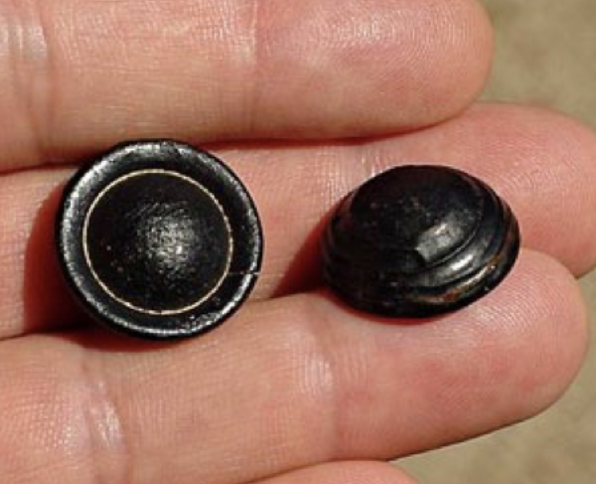
What does this image show about the evidence of impacts?
Shows tektites
Tektites are thought to form from liquids that are solidified to glass above Earth’s atmosphere. It is believed that they were formed during impacts that splashed material up from Earth’s surface well above the atmosphere
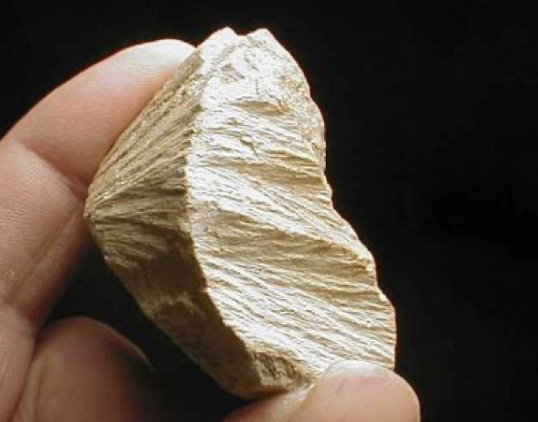
What does this image show about the evidence of impacts?
Shows shatter cones - found in the breccias and surrounding rocks
Forms at the sites of nuclear explosions - formed by very high impact, high energy events
The point of the cone always points towards the centre of the impact.
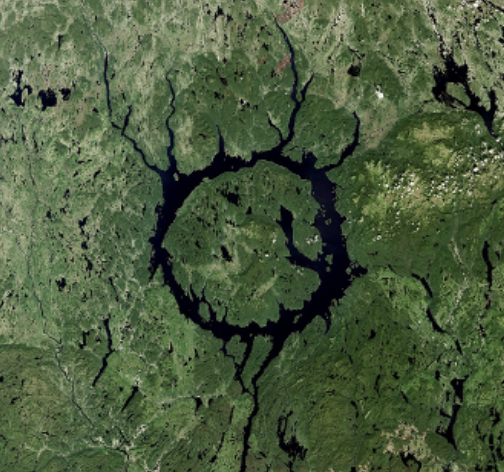
What are the characteristics of the Manicouagan crater?
100km long.
Located in Canada
Formed ~200 million years ago during the Triassic
Coincided with the period of mass extinction
Thought to have been formed by the impact of a body ~5 km in diameter.
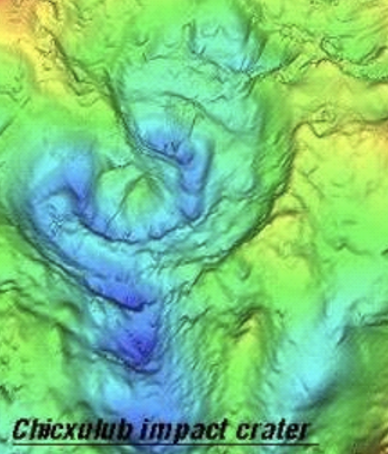
What are the characteristics of the Chicxulub crater?
150 km
Located in Mexico
Thought to be formed by an impact of a 10-15 km object
Supposedly killed off the dinosaurs

What are the characteristics of the Reis Kessel crater?
20km
Located in Europe
Pink rock is younger so should be overlying the beige/yellow rock; however, the meteorite impact removed all the pink rock surrounding
15 million years ago
Probably an impact from a 1.5 km diameter object
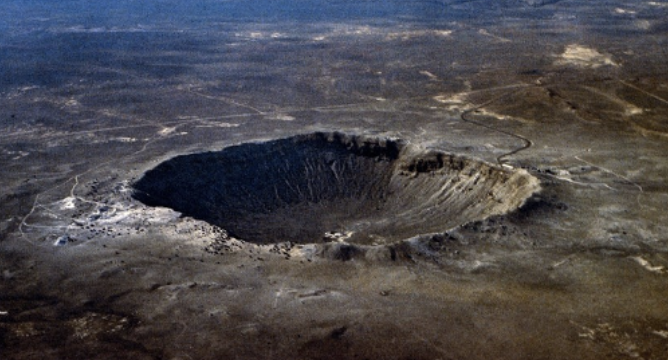
What are the characteristics of the meteorite crater?
1.2 km
Located in Arizona
Formed about 50,000 years ago
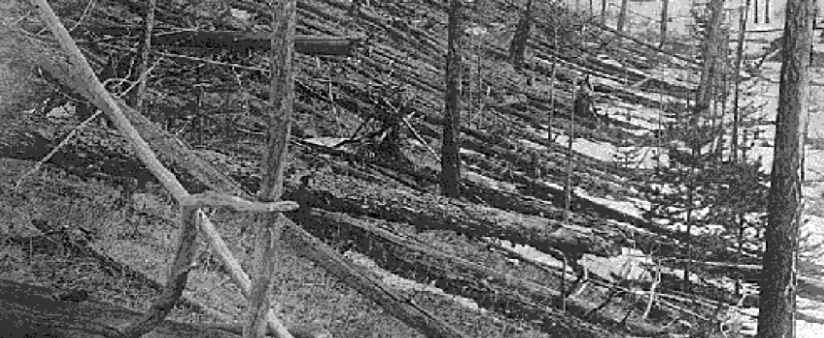
What are the characteristics of the Tunguska crater?
100km
The most recent, major impact on the earth’s surface was here in the 1900s
Wasn’t actually a meteorite; locals saw a bright light in the sky which is thought to have been a meteorite breaking up in the sky.
The only thing that hit the earth was the shockwave associated with the impact that knocked down a lot of trees.
How has the rate of impact changed?
If the earth is moving through the solar system which has got lots of meteorites and asteroids in it, each time the earth passes through it, it will collide with some asteroids
The next time it passes through, there will be fewer asteroids and therefore fewer collisions
Might be high collision rates early in the earth’s history and lower collision rates later on.
What is the late heavy bombardment?
An increase in the rate of impact of meteorites and asteroids, etc.
What caused the late heavy bombardment?
Models suggest that the planets change their orbits in early solar system history.
As they change, different portions of the asteroid belt can become unstable, sending objects into the inner solar system - movements of the outer planets, particularly, can greatly perturb the asteroid belt.